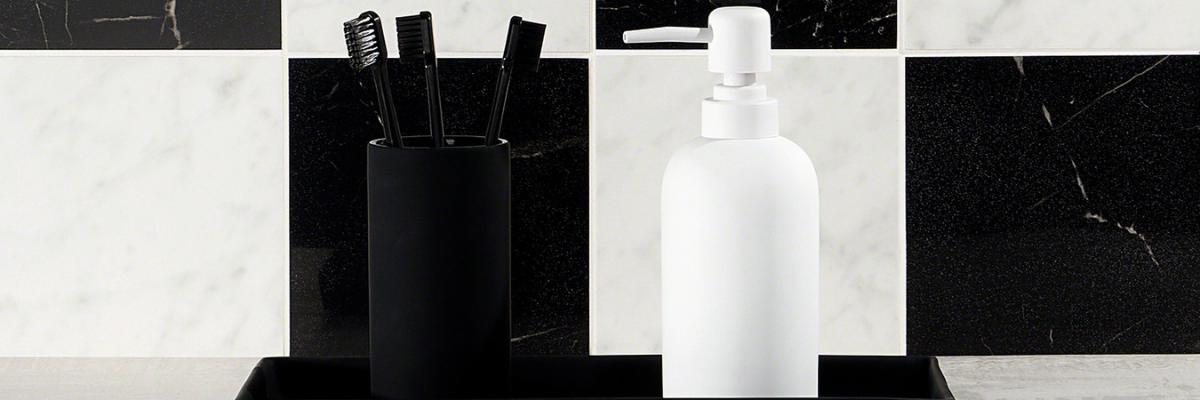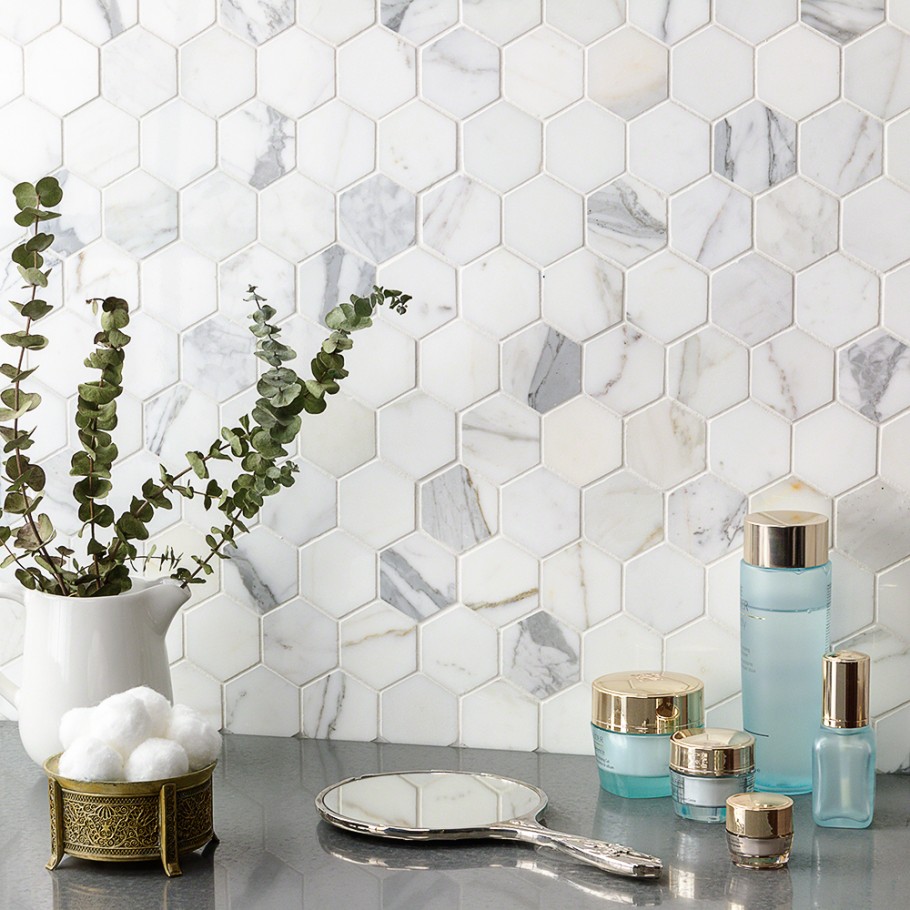Thanks to the demand for quality marble and advancements in technology, the marble look is now accessible to everyone. The real question is which is better— real marble tile or marble look porcelain tile? There are a couple of factors to consider before making your final decision.
First and foremost, marble and its natural stone brethren will always be more expensive. There is a limited quantity of that superb marble you envision in palaces and statues. The closer a marble quarry is to Greece or Italy, the higher the perceived quality. Those lovely natural hues, along with the veining from iron content in the ground, can send shivers down your spine. Throw in the ties between wealth and marble, and you can understand why it’s such a desirable design element.
Porcelain is typically composed of white or red clay. Modern advances have eliminated the scraping of riverbeds in favor of taking pulverized stone to manufacture clay. The tiles are created by pressing the clay between two metal dies. Once pressed, the tiles are fired in a kiln, a glaze is applied, and the tiles are fired again at a lower temperature. There are a variety of techniques to produce diverse shades, designs, and effects, but this is the basic process. The progression of manufactured tiles has allowed tile makers to duplicate the look of natural stone, but with a porcelain base. Consumers can now have the beauty of natural stone at a fraction of the price – about 20% less per square foot.
While marble look porcelain tile comes pretty close to replicating the facade of marble, it does not completely capture its depth and inner hue. That aside, the superficial appearance and designs are the same. Porcelain lookalikes will be more widely available and can be special ordered with a relatively short fulfillment time. Conversely, marble is a luxury item, so special ordering a quantity for your needs equals a longer turnaround time.
Sturdiness is another crucial element. Since marble is softer and more porous, it can break if not laid correctly, and if laid on a floor that is unstable or uneven, it can crack more easily. Porcelain on the other hand, is designed for the floor, and is therefore much denser and easier to cut and lay.
Another consideration is cleaning and durability. As mentioned before, marble is porous, so it stains easily and is not abrasion resistant, which can result in chipping and scratches. Marble tile is also vulnerable to acidic cleaners, wine, and food. Maintenance is crucial – marble must be sealed at least once year. Comparatively, porcelain is more resistant to stains, water, scratches, and chemicals. It also needs very little upkeep to maintain its appearance.
In the end, go with what fits your needs. Weigh your budget, design space, and tastes before pulling the trigger. Either choice will allow you to experience unparalleled beauty in your living space every day.
In the Interior Design world? Join our VIP Trade Program and you can enjoy a ton of perks like special discounts and volume pricing, to name a few.

By Surendra Armogan | Web



